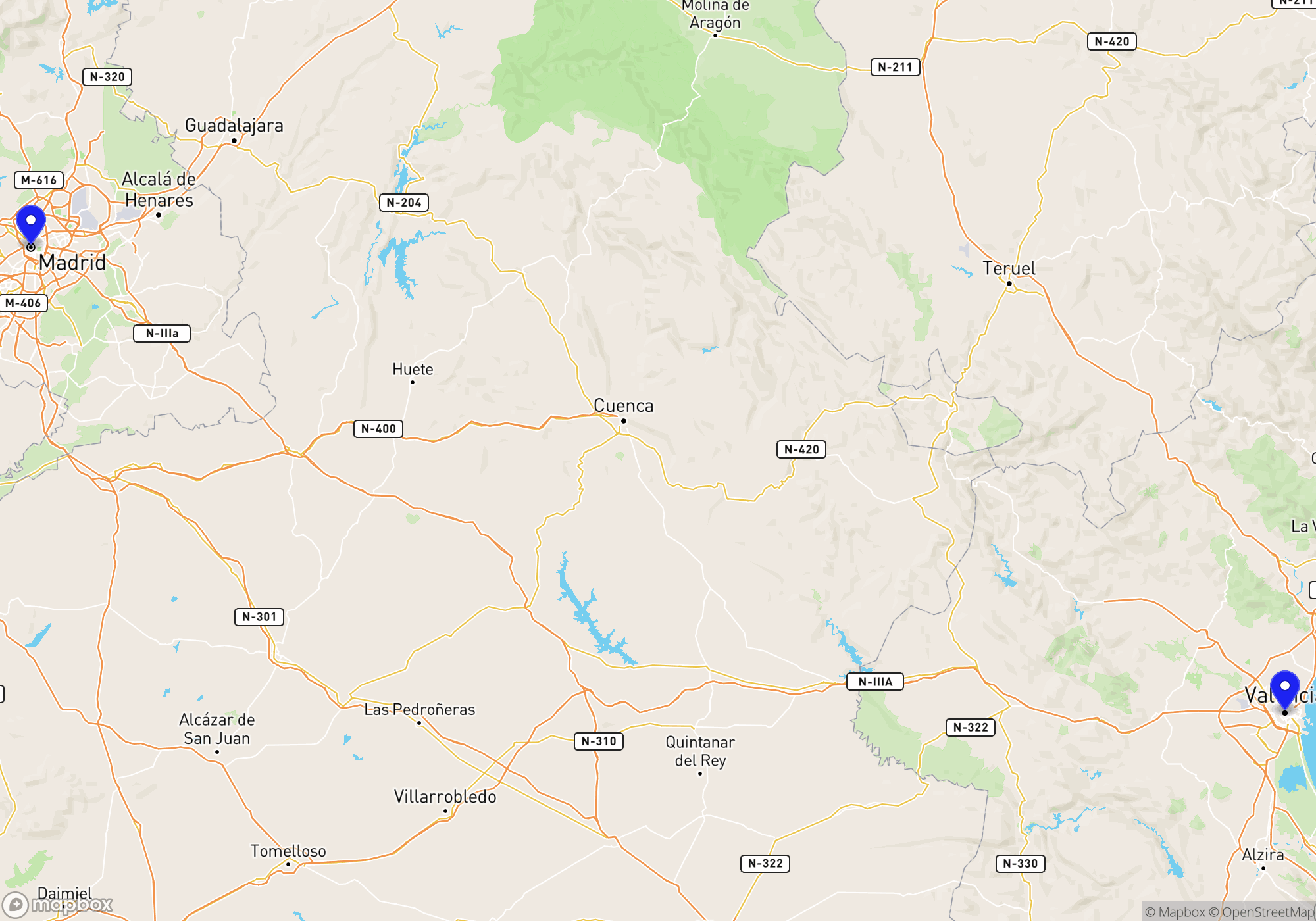
You can buy train tickets directly from the operator or through a reseller. The reseller is typically slightly more expensive (3-5%) but can provide an easier booking experience, especially if you travel with more than one operator.


These operators provide a complete journey either as a direct connection or through their partners. Even if a change of trains is involved, it’s all part of a single itinerary managed by the same train company or its partners, offering a smoother and more coordinated travel experience.


Some operators don’t run direct trains the whole way, but they serve either the departure or arrival station. In many cases, you can combine two of these operators to complete your journey by changing trains along the way. This is often a flexible and budget-friendly way to travel — especially if you’re comfortable piecing together your own itinerary.
Just keep in mind that these are separate journeys, which means a delay on the first leg could cause you to miss the second without automatic compensation or rebooking. It’s a great option for confident travelers who don’t mind a bit of extra planning.




Flixbus and Renfe are not both rail operators; Flixbus is actually a long-distance bus service. However, Renfe is the primary rail operator connecting Madrid to Valencia. Renfe offers several types of trains, including the high-speed AVE trains that significantly reduce travel time between the cities. These AVE trains are known for their speed, comfort, and reliability, making them the preferred option for many travelers. Amenities on Renfe’s AVE trains typically include comfortable seating with ample legroom, power outlets, and Wi-Fi, as well as a food and beverage service that might include a café car or a trolley service, depending on the duration and time of day. Renfe also provides customer support through various channels, including stations, online platforms, and a dedicated phone line, making it accessible for passengers to receive assistance or information. For first-time travelers, it is advisable to book tickets in advance for the best fares and availability, particularly during peak periods. Moreover, Renfe’s stations in both Madrid and Valencia are well-connected with local transportation, facilitating easy access to and from the city centers.
The Interrail Global Pass and Interrail One Country Pass are valid for train travel from Madrid to Valencia only if the traveler is not a resident of Spain. For those who are residents of Spain, Interrail passes cannot be used for trips within the country. The Eurail Pass is valid for this journey as long as the traveler is not a resident of an EU country, including Spain.
Upon arriving in Valencia by train, you can use a variety of local transportation options to explore the city. Valencia has an efficient and well-connected Metro and tram system operated by Metrovalencia. The Metro consists of several lines, with some stations offering connections to the tram network. The tram is ideal for reaching destinations closer to the coastline. To use both Metro and tram, you can purchase a rechargeable travel card, the TuiN card, which offers convenient access and transfers across lines.
For more flexibility, taxis are readily available throughout the city and offer a comfortable mode of transport. You can find taxi ranks near major train stations, such as Estació del Nord, and in key locations around Valencia. Taxis can also be hailed off the street or booked via local apps.
Ridesharing services like Uber and Bolt operate in Valencia, providing another convenient alternative for getting around. You can use their apps to request a ride at your preferred location. Always ensure your smartphone is connected to the internet for easy booking and navigation.
Valencia also has an extensive bus network operated by EMT Valencia, which covers areas not reached by the tram or Metro. Buses are an economical way to explore different neighborhoods and offer various ticket options, including singles and day passes.
Overall, Valencia’s transportation network is comprehensive and efficient, catering to different preferences and budgets, ensuring you can navigate the city with ease.
Valencia, as a prominent city on Spain’s eastern coast, serves as a vital hub in the country’s rail network with connections to various domestic and international destinations. Domestically, the high-speed AVE train connects Valencia to Madrid, providing a fast and efficient journey of around 1 hour and 40 minutes. Another popular domestic route is the Euromed service heading north to Barcelona, which takes approximately 3 hours and offers stunning coastal views. For those interested in exploring southern Spain, the Media Distancia trains link Valencia to cities like Alicante and Murcia. Internationally, while direct train options are limited, travelers can reach major European destinations by integrating with France’s TGV network. For example, one can travel from Valencia to Barcelona and then continue to France, connecting through cities like Montpellier, and onward to Paris or other French destinations. Although these journeys may require train changes, the experience is enriched by the opportunity to explore multiple regions along the way.
The best time to visit Valencia generally spans from March to June and in September to October. These months offer mild and pleasant weather, ideal for exploring the city’s outdoor attractions. The spring period, especially in March, allows visitors to experience Las Fallas, a vibrant festival featuring fireworks, parades, and large, decorative monuments. During this period, prices for accommodation might be higher, but the cultural experience is unparalleled. In summer, particularly July and August, the weather can be hot and humid, which might not be ideal for all travelers, although this is also the high tourist season with potentially higher prices. By contrast, the late spring and early autumn months generally offer more temperate weather, fewer crowds, and potentially lower accommodation rates. Arriving by train, visitors can enjoy the scenic journey into the heart of the city, with Valencia’s Estació del Nord being a central hub conveniently situated for further travel throughout the city.
When traveling from Madrid to Valencia by train, it’s essential to pack your train ticket or booking confirmation, a valid form of identification like a passport or national ID card, comfortable clothing suitable for the weather in Valencia, snacks and a refillable water bottle for the journey, a fully charged smartphone or tablet along with headphones for entertainment, power bank and charging cables to keep your devices charged, personal hygiene essentials such as hand sanitizer and tissues, sunglasses and sunscreen for the Mediterranean sun, a Spanish phrasebook or translation app if you’re not fluent in Spanish, local currency or a credit card for purchases, a light jacket or scarf for varying temperatures inside the train, and any necessary medications or a small first aid kit. Since Spain uses Type C and F plugs, ensure that electronic devices have the appropriate adapters if your devices are of different standards.